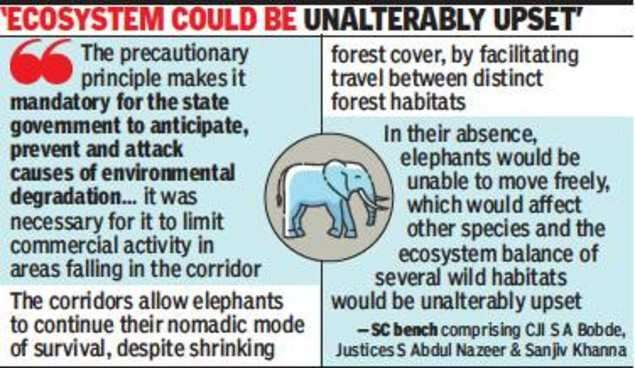Free Courses Sale ends Soon, Get It Now


Free Courses Sale ends Soon, Get It Now


Disclaimer: Copyright infringement not intended.
Context
What is a corridor?
Elephant corridors
|
State Wise Distribution of corridors |
●West Bengal leads with 26 corridors, constituting 17% of the total. ●East central India contributes 35% (52 corridors), while the North East region has 32% (48 corridors). ●Southern India has 21% (32 corridors), and northern India has the lowest with 12% (18 corridors). |
|
Status of Corridor Use |
●The Elephant corridor report released by the central government showed a 40% increase in elephant corridors across 15 elephant range states in India. ●19% of corridors (29) show a decrease in use, and 10 require restoration due to impairment.
|
|
Increase in Corridors |
●Elephants have expanded their ranges in the Vidarbha region of Maharashtra and southern Maharashtra bordering Karnataka. ●Elephant corridors have increased in these areas. ●Elephants have also been seen in increased numbers in Madhya Pradesh and northern Andhra Pradesh.
|
Issues in governing the corridors

Other issues are:
|
Conservation Status of Asian Elephants ●Convention of the Migratory Species (CMS): Appendix I ●Wildlife (Protection) Act, 1972: Schedule I International Union for Conservation of Nature (IUCN) Red List of threatened species: ●Asian Elephant: Endangered ●African Forest Elephant: Critically Endangered ●African Savanna Elephant: Endangered
|
Conclusion
|
PRACTICE QUESTION Q. There are many issues and challenges in managing the elephant corridors in India. Critically analyze with examples. (150 words) |
© 2024 iasgyan. All right reserved